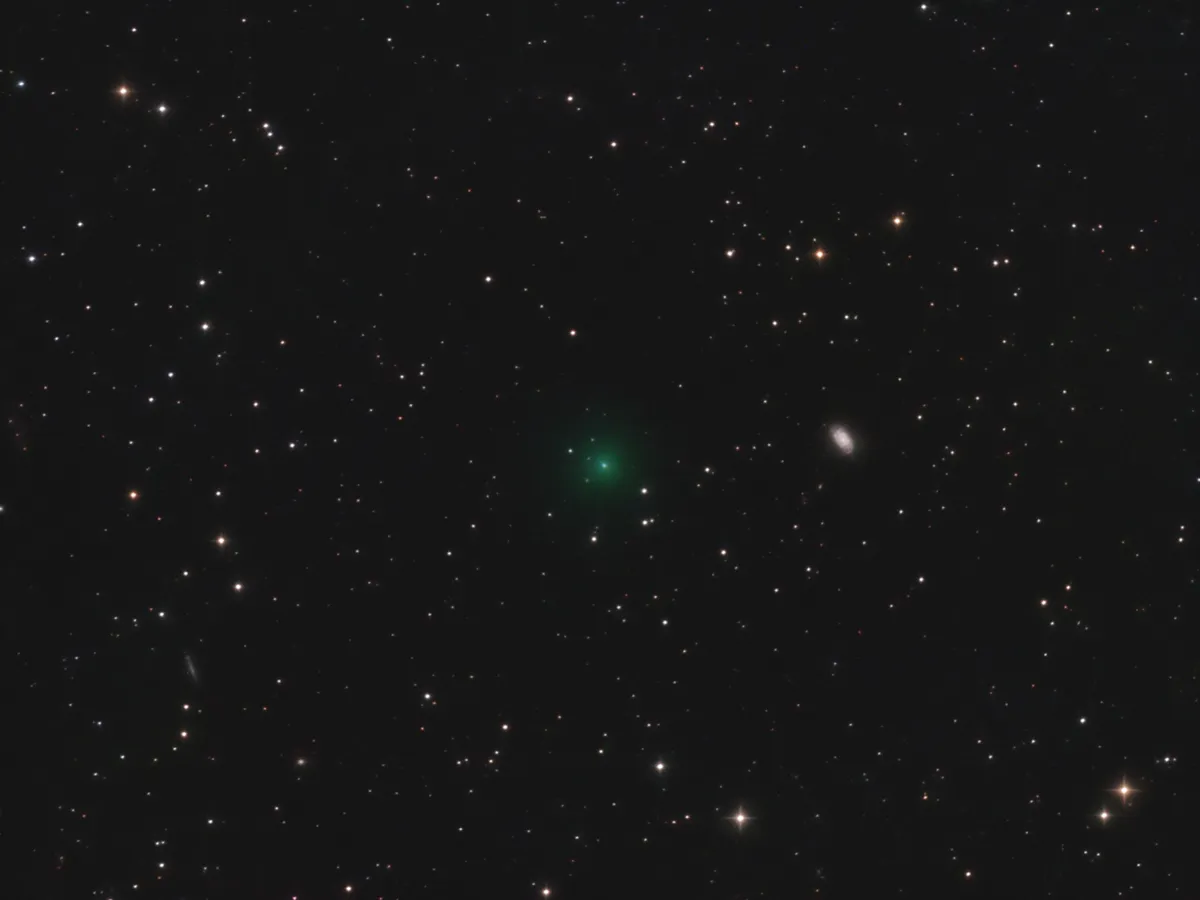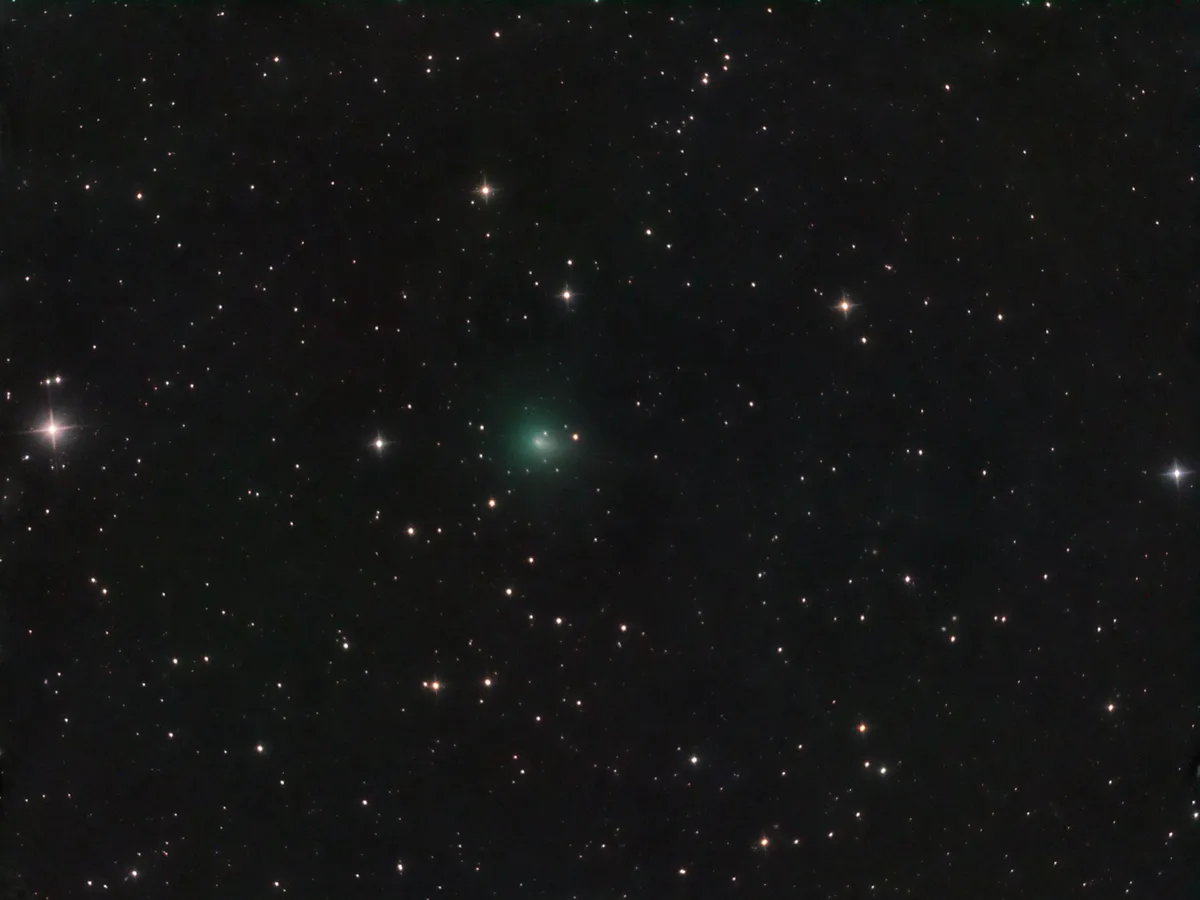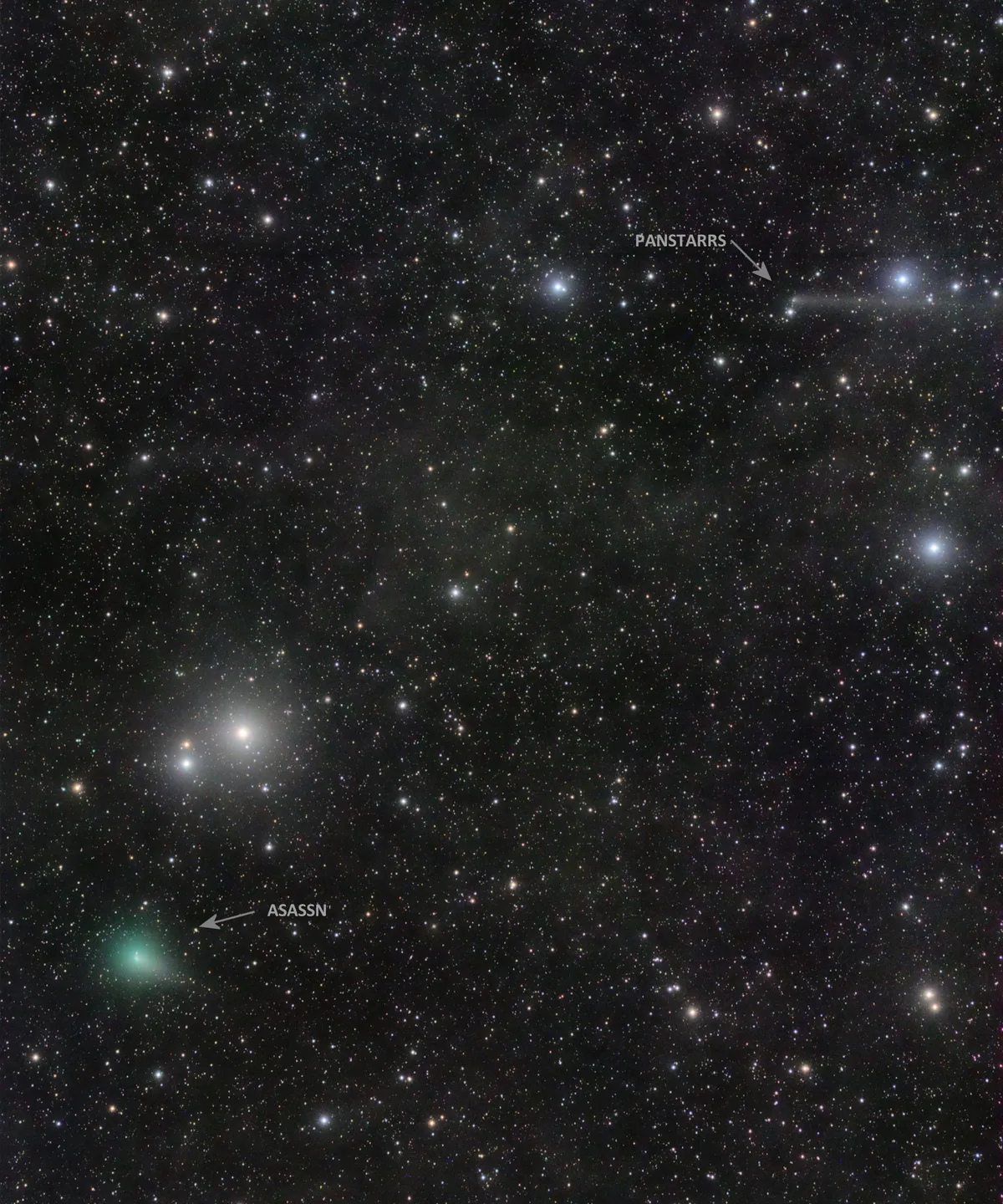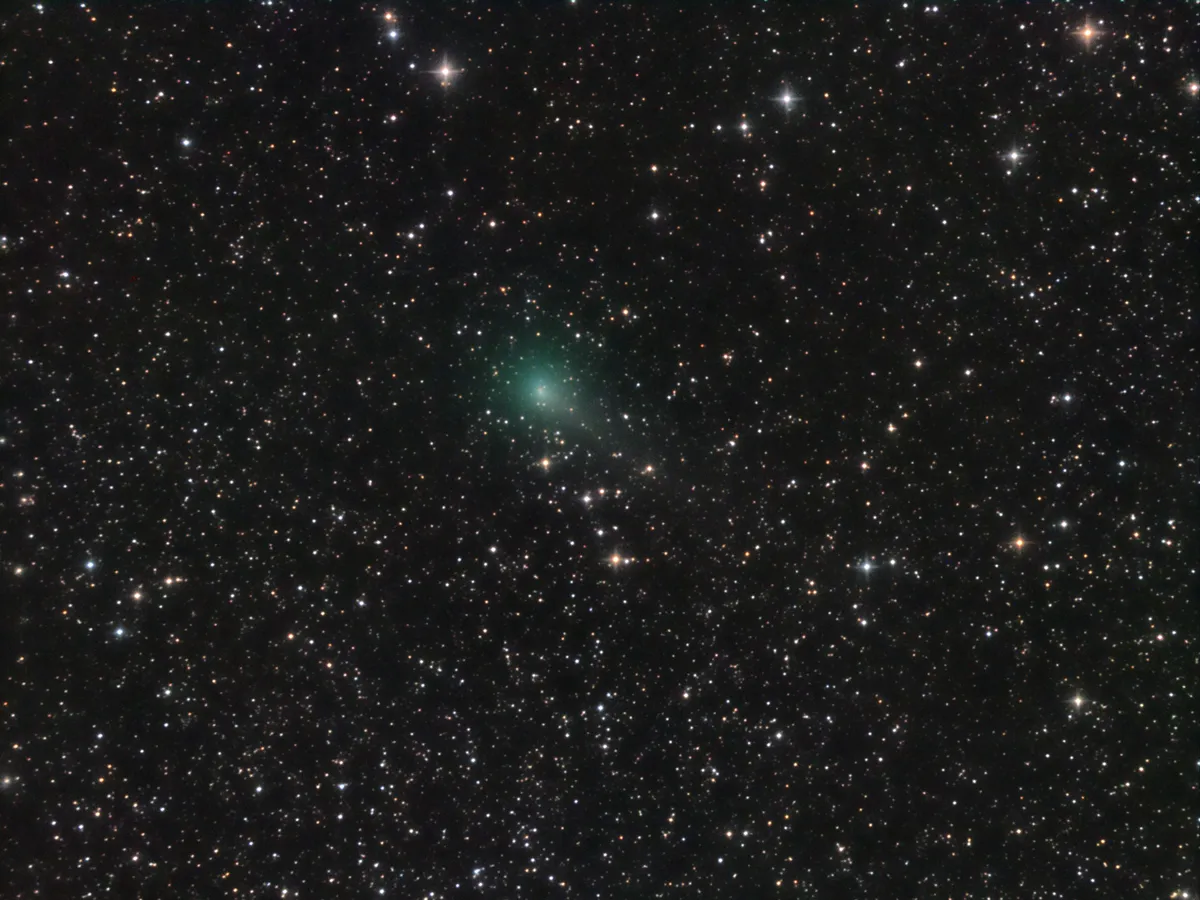Comet C/2017 O1 ASASSN was discovered by the All Sky Automated Survey for SuperNovae (ASAS-SN) on 19 July 2017.
At perihelion on 14 October 2017 it was 1.5AU from the Sun. Comet C/2017 O1 ASASSN has an orbital period of around 17,000 years.
When it was discovered in July 2017, the comet was visible in the constellation Cetus, but then by September it had moved into Taurus, before continuing into Perseus and Camelopardalis the following month.
For up-to-date info on observing bodies like this, read our guide on what comets and asteroids and visible in the sky tonight.
One observer who really made the most of C/2017 O1 ASASSN's movements across the sky was comet-chaser and astrophotographer José J. Chambó, who photographed the comet on multiple occasions over a period of months.
José captured the image below on 28 July 2017 from Valencia, Spain, using an Atik 383L+ camera and a GSO 8-inch telescope.
He said: "The comet was discovered during an abrupt increase of brightness, which continued until its present mag. +10.
"As seen in this image, it has developed a green gassy coma of diatomic carbon, with an apparent size of 10 arcminutes.
"This comet may reach a maximum brightness around mag. +7 in October (2017), when it will be observable from the northern hemisphere passing near the celestial zenith.
"There are some galaxies in this field, at right NGC 1084 and at bottom-left NGC 1110 edgeways."

José then photographed C/2017 ASSASSN again on 22 August 2017 (see image below).
He said: "One month after being discovered, the comet's brightness has increased to mag. +9 and its tail continues growing. In this image it appears to be 10 arcminutes long, although seems more long and shaped."

On 17 September 2017, José was able to capture an image remotely from Mayhill, New Mexico, US, showing two comets in the same field of view.
"Comet C/2017 O1 ASASSN, down left, is observable by binoculars now while approaching perihelion, showing a greenish coma of diatomic carbon and a small ionic tail," he said.
"At the same time, Comet C/2015 ER61 PANSTARRS, up right, moving away for four months now and twice as far from Earth, can be still imaged with a long and narrow tail.
"Between both you can see a shred of IFN (Integrated Flux Nebula) very near to the Pleiades.

On 18 September 2017, José once again photographed the comet from Valencia, Spain, which can be seen below.
He said: "Comparing this image with the one I took a month ago, you can see an increase in the apparent size of its greenish coma from 7 arcminutes to 10, and the length of its ionic tail from 10 arcminutes to 20.
"Its brightness has slightly increased at the same time from mag.+9 to +8.5 approximately. The brightest star in the field is 37 Tauri, at mag. +4.4."

The image below was then captured on 25 September 2017.
José said: "Comet C/2017 O1 ASASSN is keeping its morphological shape with a coma of 8 arcminutes' diameter and tail about 15 arcminutes long.
"In this image it's currently located in the constellation Taurus, passing by a zone of dark clouds of dust that obscures the starry background."

José captured the comet once more on 21 October 2017, as seen below.
He said: "Despite having a brightness drop of half magnitude to mag. +8.5 the comet still reveals a coma 10 arc minutes in diameter in images.
"However, its external layer is very diffuse, and you can also see a faint tail 20 arcminutes long toward southwest."

José's final image was captured on 18 November 2017.
He said: "Its brightness has dropped clearly over the last month, now down to about mag. +10.
"In this image, taken when the comet is moving into the constellation Cepheus towards the celestial north pole, it displays a green-bluish coma of 7 arcminutes' diameter and a tail more faint and short, about 10 arcminutes in length."

Thanks to José for sending in his images of Comet C/2017 O1 ASASSN and his reports on how the comet was changing over periods of weeks and months.
You can also read José's report on Comet C/2015 V2 Johnson.
For more of José's work, visit his Astrobin page.